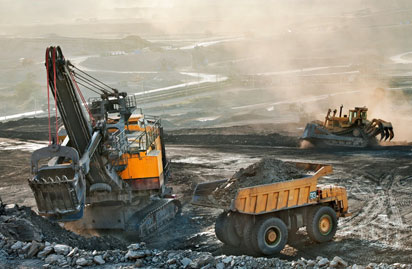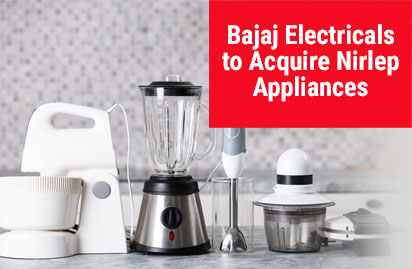In order to continue the bid to make India as self-reliant in its economic development as well as to boost domestic production, making it less reliant on imports, the Indian government has decided to impose certain tariffs over the import of Lithium-ion cells. India also plans to offer several other incentives keeping in mind the goal of increasing domestic production of key electronic related commodities and to increase the local production in order to decrease the very evident dependence on imports from other nations for sustaining its electronics sector.
The sudden need to make India self-reliant also comes as a result of the need to grab a key global market share in the manufacture of Lithium-ion cells in the world. India plans to introduce tariff as well as non-tariff barriers in order to reduce the imports of foreign shipments into the country. India intends to grow and boost its Lithium-ion cell production locally to capture the largest share for the same in the global market space.
China’s dominance over this market
The dominance of the Chinese over this market space has been clearly noted by the government of India and due to the present need for increasing domestic production through “Make in India” schemes, India’s move to impose tax on its import comes as no surprise. India is rapidly growing and incentivizing the Lithium-ion production sector so as to trump China’s evident dominance in the global market. The taxes imposed, schemes to be developed and the incentives provided have all been enumerated below.
The growing use and benefits of Lithium-ion cells
Lithium-ion cells are the primary resource required for energy generation through the use of rechargeable batteries for goods such as laptops, mobile phones, electric vehicles (EV) etc. They are the building blocks for new age sustainable technology and in huge demand at present within the country.
The rising demand for Lithium-ion is also because these calls are largely also used for the production of consumer products and electronics along with power grid.
Incentives and Plans for growth
Following are the incentives and promotion plans that the government proposes to offer in the near future:-
- There are incentives such as a 100 % deduction in tax over capital expenditure during the first year of operation given under Section 35 D, the option of concessional financing by providing companies with a solid infrastructure status as well as the waiver of the minimum taxation alternative which has been planned by the government.
- An output-linked subsidy of cash which is based on the kilowatt hours (KWh) of the cells sold may also be offered. Further this is being worked upon by the ministry of heavy industry along with federal policy think-tank NITI Aayog together.
- It has been found that this proposal was being worked upon by the NITI Aayog till March, 2020. However, the delays have been caused due to the impediment caused by the Covid-19 pandemic.
- As far as energy security plans are concerned, India has planned to issue an expression of the interests in order to aid the process of establishing a minimum of five Tesla-like gigafactories for the manufacturing of cells and battery with each of them having a capacity of 5 to 10 gigawatt hours (GWh).
- For better understanding, it can be said that each GWh of battery capacity is sufficient for providing power to atleast a million households and about 30,000 electric cars in the country.
Benefits of Lithium-ion cells in the power sector
- Lithium-ion batteries (LIBs) have attracted a lot of interest as supporting devices in power grids due to their remarkable advantages, like high energy density of up to 200 Wh/kg, high EE of more than 95% and a long cycle life aka atleast 3000 cycles at deep discharge of 80%. Therefore, 77% of the electrical power storage systems in the world rely on LIBs for the stabilization of power grids, indicating a high-value market for LIBs.
- Amongst these, the electric batteries exhibit a large potential for application to grid-level electrical energy storage due to their attractive features, such as flexible installation, modularization, rapid response, and short construction cycles. Usually, when electric batteries are used to the grid-level energy storage system, the battery technologies are needed to satisfy the complex and large-scale deployment applications to these power grids. Hence, the needs for grid energy storage applications, like the capacity, energy efficiency (EE), lifetime, power and energy densities, should be analysed.
- Further, due to their high energy density, LIBs are an ideal choice for integration with renewable energy sources in grid-level energy storage systems, wherein LIBs store the generated electrical energy for use with a minimal cost to the end consumers.
- Hence, in this perspective, LIBs serve as a promising energy storage technology in the power grids in terms of their operation mechanism, construction, design and several other advantages.
- Grid-level energy storage systems plays an integral role in the usage of electricity and the provision of electrical energy for various large-scale deployment applications. Thus the demand for LIB’s has increased exponentially.
- LIBs have the potential to become a key component in achieving energy sustainability at the grid scale because of their high energy density, high EE and a long life cycle. In this perspective, the characteristics of LIBs for applications to grid-level energy storage systems are superior to others.
Use of Lithium-ion cells in solar power generation
- Solar photovoltaic power farms benefit a lot from the integrated LIBs for storing the electrical energy and smoothing the output power. One of the main challenges to solar photovoltaic power generation is the intermittence during the night and during periods when sunlight is blocked for any reason.
- Thus a combination with batteries forms a perfect operating system which can cope with high-gradient power spikes as well as steady-state power requirements as well.
- The use of batteries in a solar photovoltaic field has exhibited excellent output power stability, particularly under partial shading and solar radiation Recently, it has been noted that there will be continued growth of the LIB’s in the market with the integration of power supply systems with solar photovoltaics and wind power, which will only expand further and be increased to 2 GWh/year in 2020 and 30 GWh/year in 2030.
- Domestic opportunities of Li-on
- India has witnessed a surge in the production of electric cars within a span of just a decade and it is bound to increase in the near future. This necessitates the need for the increased production of Lithium-ion battery cells locally as the more self-reliant we become the faster we shall be able to acquire the primary dominance of Lithium-ion over the global market space.
- These Li-ion batteries act as the primary storage option for electro-chemical energy. And the batteries thus produced are rechargeable and contain Li-ion as the key component of electrolyte within them.
- The primary focus over the manufacture of these Li-ion batteries is the sourcing as well as the mining of lithium along with other minerals such as cobalt, aluminium and copper for its support.
- The exact procedure involved in the manufacturing of of Li-ion batteries is dependant over the production of cell components such as electrode, electrolytes, separators, cell and module production, battery pack assembly and integration of components. Hence the primary applications of Li-ion battery include electric vehicles (EV), EV charging and swapping stations, and grid services in India
- Further Market Influencers
- The government’s plans and incentives offered to boost the electronic industry is the primary driving factor which has propelled a sudden growth over the manufacturing units producing Li-on cells. The goal of the Indian government is to ensure the future conversion of two and three wheelers into 100% electric automobiles by the year of 2030. Presently, India is still dependent on other countries for the acquisition of EV batteries, which has resulted in the hiked price of EVs as well. However, these plans and a major taxation over imports from China for Li-on cells is likely to reduce this current dependence on imported materials and the penetration of EVs within the Indian automotive sector is expected to increase the need for indigenous manufacturing units of Li-ion batteries. This is in sync with the self-reliant schemes presented by the Indian Government at present and even fortifies the “Make in India” plan tenfold.
- There have been several large investments from foreign as well as domestic players which have contributed as a major role in boosting the Li-ion battery manufacturing market locally within India.
- The proposed supportive financial policies as well as the ones in existence like the land grants, the reduction in the number of permits, tax reduction in foreign investments as well as certain direct government subsidies have further encouraged the influx of investments. Suzuki Motor Corporation, Toshiba Corporation and Denso Corporation have even invested INR 37.15 billion and INR 12.14 billion in two phases for aiding the manufacture and building Li-ion battery assembly lines in Gujarat, India.
- However, despite these efforts, a significant impediment to the growth of the market is that the country is still reliant on the import of raw materials owing to its lack of mineral reserves at present. India is dependent on countries like China, Chile, Bolivia, Argentina and Australia to meet the demand for lithium. Further, there exist certain other raw materials like cobalt, nickel, manganese and graphite which are also sourced from various other foreign countries. And on the other hand, the ecosystem consists of numerous stakeholders and coupled with the weak coordination amongst them there are several more restrains in the development of a robust supply chain network in the industry.
- The imposition of tax over imports, though is likely to reduce this dependence by a large degree. Further the incentives which the government proposes to execute and the policies which will be more pro-India as far as production is concerned is also meant to reduce and in time, completely extinguish the need for importation of these raw materials.
Benefits of these incentives to Lithium-ion manufacturers
- There have been reports that the minister for renewable energy, Mr. R.K. Singh has given his assurance to the Lithium-ion cell manufacturers in order to encourage them to establish more production units for the same due to immense amounts of incentives which are to be provided to them for doing so.
- This has been done since a very clear increase in the demand for Lithium-ion has been projected for present and future use and all sorts of cost subsidies and policies towards boosting its production is hence being implemented in order to help manufacturers reduce the cost of production, increase the output and avail off more benefits like higher sales and profits owing to the subsidies, incentives and several booster policies for the same.
- The future of automobiles and electronics has been envisioned through electric vehicles and higher performing power grids and electronics instruments like remotes, laptops etc. Their demand is only to increase and hence to ensure the match of supply with the same, these incentives aim to aid the production units utilize minimum resources and deliver maximum output.
- Since at present, most of these Lithium-ion batteries are imported, the cost of vehicles and gadgets remains quite high. The newer make in India policies and the bid to make the country more self-reliant has brought about suggestions for policies that help extract resources locally for the production of these cells at a lower cost. The government is looking to provide more help towards the extraction and utilization of Lithium within India, rather than depending on foreign resources. This is also because, India’s goal is to ensure that all vehicles are electric in nature by the year of 2020.
- India already has over 1 GWh of lithium ion battery pack manufacturing capacity at present and it is only expected to rise further according to the IESA. This helps manufacturers simplify their production requirements and achieve greater sales and use for their cells.
- These policies are said to be aimed at attracting potential investors and upgrading the skillset of human resources within our country in order to really amp up the manufacture of Li-on cells. This push for Lithium-ion cells and manufacture of electric cars shall even act as a huge incentive to conglomerates like Tata Motors and Mahindra and Mahindra, who are only looking to expand production and manufacture beyond the present limits. The details pertaining to these incentives shall be released soon.






